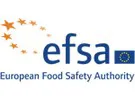EFSA has published its annual report on pesticide residues found in food in the European Union. The report is based on data from the official national control activities carried out by EU Member States, Iceland and Norway and includes both targeted and random sampling.
A total of 91,015 samples were analysed in 2018, 95.5% of which fell within legally permitted levels. For the subset of 11,679 samples analysed as part of the EU-coordinated control programme (random collection), 98.6% of samples were within legal limits.
The report gives a snapshot of the presence of pesticide residues in food in the EU and any possible risk to consumer health. It also provides risk managers with important information on which to base decisions regarding future control measures.
Bernhard Url, EFSA’s Executive Director, said: “For many years this report has supported the work of the European Commission and Member States in ensuring the proper use of pesticides in line with EU legislation and targets. Efficient collection and rigorous analysis of such data will continue to be of central importance in ensuring the safety of food sold in the European Union.”
Risk-based (targeted) versus random collection
The section on randomly collected data is particularly useful as it covers the same basket of products on a three-year rotation, which means upward or downward trends can be identified for specific goods.
For example, between 2015 and 2018 the proportion of samples with residue exceedances increased in bananas (from 0.5% to 1.7%), sweet peppers (1.2% to 2.4%), aubergines (0.6% to 1.6%) and table grapes (1.8% to 2.6%). On the other hand, exceedances fell in 2018 compared to 2015 for broccoli (from 3.7% to 2%), virgin olive oil (0.9% to 0.6%) and chicken eggs (0.2% to 0.1%).
This year EFSA has translated the results of the coordinated programme into browsable charts and graphs, to make the data more accessible to non-specialists.
The national control programmes are risk-based, targeting products that are likely to contain pesticide residues or for which legal infringements have been identified in previous years. These programmes give important information to risk managers but – unlike the data from the EU coordinated programme – they do not provide a statistically representative picture of the levels of residues that one would expect to find in food on the shelves in shops across Europe.
Risk assessment
EFSA carried out a dietary risk assessment as part of its analysis of the results. This suggested that the food commodities analysed in 2018 are unlikely to pose a concern for consumer health. However, a number of recommendations are proposed to increase the efficiency of European control systems, thereby continuing to ensure a high level of consumer protection.
For more information: European Food Safety Authority
European Food Safety Authority
www.efsa.europa.eu
